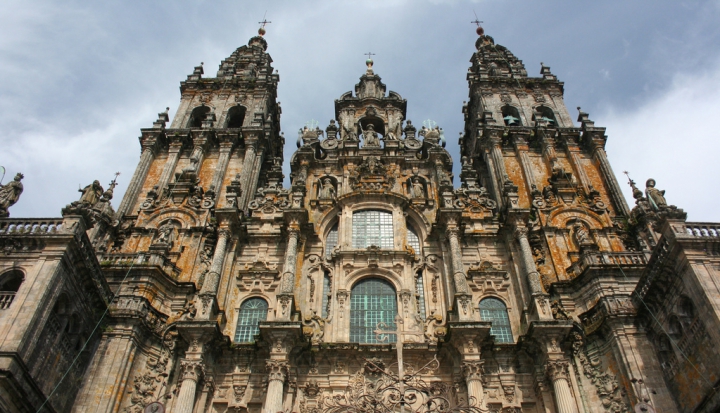Those who practice Zen refer to sitting in meditation as zazen. The Japanese word means “just sitting.”
They do nothing else except sit and wait. Shedding the unnecessary. Allowing the world to reorder itself into its simplest form.
The profundity of that little fact escaped me as I schlepped through the forests and cities of northern Spain on the St. James Way in the rain and the blistering heat; evading hostile guard dogs; constantly searching for dry socks, potable water, and modern toilet facilities; looking for Spaniards who spoke English sufficiently to answer my questions; and, above all, cursing the day I started out on this miserable, seemingly interminable walk to a church in the middle of nowhere.
And throughout the entire time, just walking.Nothing else.
I presumed that while on a pilgrimage one prays, but I quickly realized I was mistaken. My mind was occupied with finding those hard-to-locate and even harder-to-trust yellow arrows that supposedly lead you to Santiago de Compostela and its cathedral, the ultimate aim of all who walk “the Way.” Many of the arrows were woefully inaccurate. Some, I’d swear, were painted to intentionally mislead hapless pilgrims to very expensive hotels rather than inexpensive refugios, or pilgrim dormitories.
The Way is a 1,200-year-old pilgrimage route that leads to the shrine of St. James the Apostle in the cathedral of Santiago de Compostela in northwestern Spain. It remains a vibrant expression of the faith in modern times. More than 100,000 pilgrims from 100-plus countries walk the Way every year.
For the pilgrimage to “count,” the last 100 kilometers (61 miles) must be done on foot. One can also bike or ride a horse or donkey for the last 200 kilometers. I was fairly sure my horse wouldn’t fit in the overhead compartment, and I left my donkey in my other jacket, so those weren’t possibilities.
Spanish and English are the most common languages by which pilgrims communicate along the Way, but dozens of others can be overheard. All of Christendom is present on the road to Santiago in a magnificent profusion of camaraderie and charity.
As soon as I saw the spires of St. James Cathedral, I was transfixed. All the frustration, the anguish, the mind-numbing tedium, and the thoughts of my annoying blisters were swept away. I had walked 200 grueling kilometers to get here, and now all I felt was overwhelming joy and relief. I made my way to the cathedral and knelt before the shrine that holds St. James’ relics below the high altar. A flood of emotions and memories of the previous 10 days washed over me.
And I had the time to just sit. Nothing else.
Shedding the unnecessary. Allowing the world to reorder itself into its simplest form.
And then came understanding.
The problems that had plagued and preoccupied me fell to the wayside. The at times bizarre fellow pilgrims, the loneliness that sometimes enveloped me, and every ache and pain I experienced while walking were all forgotten. The only things I could remember were the extraordinary natural and architectural wonders I saw along the Way, the fleeting but exquisite moments of prayer, and, above it all, my encounters with kind, sincere, generous, compassionate, and holy people.
I felt transported as I sat in the midst of this rejoicing crowd of God’s children gathered from all corners of the earth, speaking dozens of languages, all united in the Mass. It should have been bedlam, and yet here love and faithfulness have met and righteousness and peace have embraced (Ps. 85:10).
Like any pilgrimage, the Way has both a physical and spiritual aspect. The intimate connection between body and soul is an important part of Christian theology. Changes in one are reflected in changes in the other, which is why the church recommends fasting and abstinence to further the development of one’s spirituality.
The point of a pilgrimage is not simply moving from point A to point B in order to collect a coupon at the final destination. Rather it is a period of intense contemplation, a crucible in which one sheds attachments to the material world. It is a state of being in which one concentrates only on loving mercy, acting justly, and walking humbly with God.












Add comment